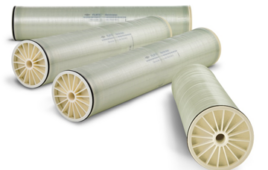Using chemical
compounds found in a Japanese plant as a lead and the clever application of
ultraviolet light, a Scripps Research Institute team has created a unique
library of dozens of synthetic compounds to test for biomedical potential.
Already, one of the compounds has shown great promise in inhibiting replication
of HIV particles and fighting inflammation.
With the report of
their work scheduled to appear in the online Early Edition of Proceedings of the National Academy of
Sciences, the researchers now plan to optimize the compound’s
pharmaceutical potential so that it can be pursued as a drug candidate.
The plant Hypericum chinense, known in Japan as
biyouyanagi, produces beautiful yellow flowers and, as it happens, potent
chemical compounds known as biyouyanagins that have already shown promising
anti-HIV and anti-tumor activity. That got the attention of K.C. Nicolaou, who
holds the titles chair of the Department of Chemistry, Aline W. and L.S. Skaggs
Professor of Chemical Biology, and Darlene Shiley Chair in Chemistry at Scripps
Research. Nicolaou’s interest was also piqued because the plant is from the
same family that produces St. John’s
wort, and the biyouyanagins possess an intriguing molecular architecture.
“It was the
perfect recipe for convincing a synthetic chemist to get into the game,”
said Nicolaou, who spearheaded the project in collaboration with a number of
Scripps Research colleagues. “It seemed like there was so much to be
discovered.”
Best of both worlds
Within the biomedical field there are some researchers that argue natural
products are the best route to new drug discovery. Others laud the potential of
designing completely synthetic drugs. “I belong to both camps,” says
Nicolaou, because he prefers to start with natural products and then modify
them in a variety of ways to create new synthetic products with improved
potential. “The power of this method is that it allows us to build on the
natural structures to make a whole new and diverse family of compounds.”
An unexpected side
result of the group’s initial work was the discovery that the structure
previously reported for the biyouyanagins was slightly off. With the proper
structures in hand, the Nicolaou team recognized it could induce formation of
critical bonds that join the two domains of the molecules by bombarding the
right chemical building blocks with ultraviolet light.
This technique, known
as photocycloaddition, allowed the scientists to synthesize the two known
biyouyanagins as well as a third type not yet discovered in nature. The
scientists then began combining a variety of different building blocks—some
commercially available and others they produced in the lab—using the
photocycloaddition to build a library of about 50 analogs, compounds similar to
the originals but with significant chemical variations.
The resulting compounds
then went in groups to various collaborating Scripps Research laboratories.
Professor Dennis Burton’s lab analyzed the compounds’ ability to inhibit
replication of HIV. Chair of the Department of Chemical Physiology Ben
Cravatt’s team looked at anti-inflammatory potential. Professor Juan de la
Torre’s group examined effects against LCMV, the prototype member of the
arenavirus family that includes several causative agents of deadly hemorrhagic
fever disease in West Africa and South America.
All of the compounds in
the team’s new library are, like aspirin, considered small molecules. Nicolaou
believes these offer the best biomedical potential. Larger molecules such as
proteins are finding new medical applications, but have to be injected and are
often short-lived and very expensive.
“If you can
discover small molecules that work, they’re affordable and they last long
enough in the body to do their jobs,” he said. “Those are the magic
bullets.”
A promising lead
One compound from the new library, number 53, stood out. One side of its
structure is essentially the same as that of a natural biyouyanagin, while the
other side is a departure comprising a structural motif like the bases found in
DNA. In the HIV testing, it compared favorably with the well-known AIDS drug
AZT, though it is not yet as potent. In the anti-inflammatory tests, it was as
potent or more so than commercially available products. This particular
compound hasn’t been tested for its potential against arenaviruses, but
Nicolaou is hopeful the team will eventually find interesting activity there as
well.
“We were certainly
excited to see those results,” says Nicolaou. “It’s quite a promising
lead.” Next, the team will tinker with 53’s initial structure in search of
modifications that will increase its potency. Once its biomedical activities are
optimized, the group will consider pushing the compound toward the drug-testing
process.




